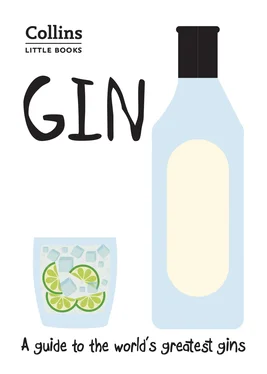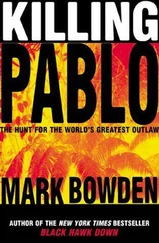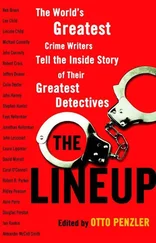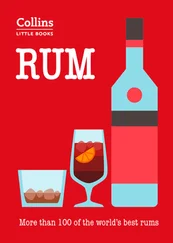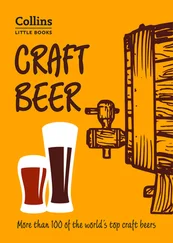No book could hope to cover them all, nor reflect the surge of renewed interest in flavoured gins, aged gins, innovative new drinks based loosely on gin, and close relatives such as genevers, and this book doesn’t even attempt to do so. To put it into some context, one major online retailer lists nearly 450 gins. That’s just the tip of the iceberg. The number of new producers is growing by the week. It seems that every town, city, and even village is producing its own gin, and not just in England, either. Indeed, most British gin is produced in Scotland.
The loose definitions of what constitutes gin means that long-standing controversies as to the importance of juniper to a gin’s taste and the way it is distilled continue unabated. Some of the experimentation and innovation in the category mean that, effectively, new drinks categories are being invented.
But, whatever else, the craft revolution means that gin has shaken off its snooty middle-class English image, and is enjoying a surge of popularity among drinkers seeking quality and well-made drinks.
This book is meant to be an introduction to the gin category. We have selected one hundred gins, covering the best-known names and a selection of the best of the new wave of gin makers. We have concentrated mainly on traditional gins.
So what exactly is gin?
What is gin and how is it made?
Unlike the production of Scottish single malt whisky, which is covered by a stringent set of rules, there is considerable debate as to what may be acceptably called gin.
The basic definition of gin is a spirit made from ethyl alcohol and flavoured with botanicals. Juniper berries must be included and should be the ‘predominant’ flavour. The alcoholic strength of the spirit must be no less than 37.5% ABV. There are further definitions as to what can be called distilled gin and London gin.
But the definitions are loose and leave considerable loopholes and room for interpretation. There have been attempts to tighten up the rules, but some distillers have played footloose and fancy-free with the requirement to have a ‘predominant’ juniper flavour.
Making gin
In simplistic terms, gin is made from a base spirit that has been distilled to a high strength and then reduced to 60% ABV. Some distilleries make this base spirit themselves, but many buy it in from a select number of large distilleries.
The spirit, made from a variety of grains, is sometimes referred to as neutral grain spirit, though that is not quite the case, and the spirit used will influence the final gin. To this base spirit a range of botanicals will be added. These are natural ingredients and include the compulsory juniper berries, as well as, most often used, coriander, angelica, lemon, and orange peel.
The number of botanicals varies from gin to gin, but a good-quality premium gin may have six to ten botanicals, and these may include everything from spices to tea and from flowers to exotic fruits.
Steeping
Some distillers soak the botanicals before distillation, and they have their own ideas how long this process should take.
Immersion
The botanicals are then immersed in the base spirit, normally in a pot still. The pot still is then heated to release the oils from the botanicals. At this point the process is similar to that for single malt whisky production, with the early vapours discarded, the middle part of the run collected, and the final part discarded. Further neutral alcohol and water may be added.
Vapour extraction
Some distilleries do not immerse the botanicals, but suspend them above the base spirit. This is the method used by Bombay Sapphire. As the vapours rise, the flavours of the suspended botanicals are extracted and collected as before.
Individual extraction and blending
Some distillers take each botanical separately and put it through the distillation process. Then the collection of different botanical distillates are blended to produce the required gin.
What this book covers
It is hard to believe that in the early part of the millennium gin was restricted to Gordon’s, Beefeater, and a smattering of premium expressions. Now a good bar will offer the customer an array of regionally produced premium gins in a range of styles and flavours, quite possibly alongside a choice of mixers. No longer is the lemon slice the lone accompaniment to the classic gin and tonic.
Tonics matter, as does the ice used. And discerning drinkers now understand what makes a good martini or negroni, as well as a gin and tonic.
And that is the tip of the iceberg. The new generation of mixologists are working at the coal face by exploring old drinks styles and historical recipes, looking to experiment with botanicals, and rediscovering and re-inventing classic old drinks such as The Old Tom.
Apart from a passing reference to these drinks styles, this book is firmly focused on what might be described as the more traditional gin brands. Our selection includes a mixture of the major producers, alongside some of the more exciting of the new producers and one or two which show just how vibrant and exciting the gin sector has become.
Gin-related spirits: genever
Genever is often referred to as ‘Dutch gin’ but this is not quite right. Under European law it may be made in the Netherlands, in Belgium, and in a couple of German and French states. Though it is related to gin and is seen to be the forerunner of the premium gin spirit now being made in Britain, it also nods towards the production of whiskey, and particularly bourbon.
Genever is made from a mash bill made up of rye, corn, and malted barley. The grains are cooked at different temperatures, milled and mashed by adding hot water. This is then fermented into a rough beer or barley wine. The yeast used is normally baker’s yeast, but brewer’s or distiller’s yeast may also be used.
The resulting liquid is then distilled up to three times. Finally the resulting distillate is distilled again with a range of botanicals which must include juniper berries. The resulting genever is fruity and infused with botanicals.
Oude or jonge
Genever may, and often is, matured in barrels at this point. And it may be described as either ‘oude’ or ‘jonge’. Somewhat confusingly, this does not refer to the length of time the spirit spends in wood. A jonge genever contains a maximum of 15 per cent malt, and often a lot less. Oude genevers must have a minimum of 15 per cent malt wine content, and typically have 40 per cent, giving them more character.
Genevers are most often matured for a short period in used casks, but some are aged for considerably longer, and the likes of Zuidam in the Netherlands is using a range of cask types.
Gin-related spirits: Old Tom
Nobody is absolutely sure where the name Old Tom comes from, but you’d be forgiven if you thought it had something to do with the expression ‘any old Tom, Dick, or Harry’, because it would seem it can be many things to many people.
Just as its naming is lost in the depths of time, so it would seem is an exact definition of it, but, in simplistic terms, it is a maltier, fruitier, and sweeter version of what we might now associate with traditional gin.
It occupies a space between the big, rich, malty genevers that the Dutch produced, and the sharper, tangy, and drier style of gin that we know as London Dry Gin. Walk into a gin palace or pub in the 18th or 19th century and order a gin, and Old Tom is likely to be what you would get. But by the 20th century its popularity had declined and London-style gin had replaced it.
The picture is further clouded by the fact that distillation techniques were evolving rapidly, there were no uniform or standardized methods of production, and, beyond the need for juniper berries to be among the botanicals, ingredients for it weren’t set in stone. Some Old Tom was exported in tired old barrels that didn’t influence the flavour of the spirit, while others travelled in active barrels and matured en route, giving them very different flavours.
Читать дальше
